NASA's OSIRIS-REx capsule returns to Earth with a sample from the 'potentially hazardous' asteroid Bennu
A capsule containing 2 ounces of rocky material from the "potentially hazardous" asteroid Bennu has landed safely in the Utah desert after a seven-year mission in space.
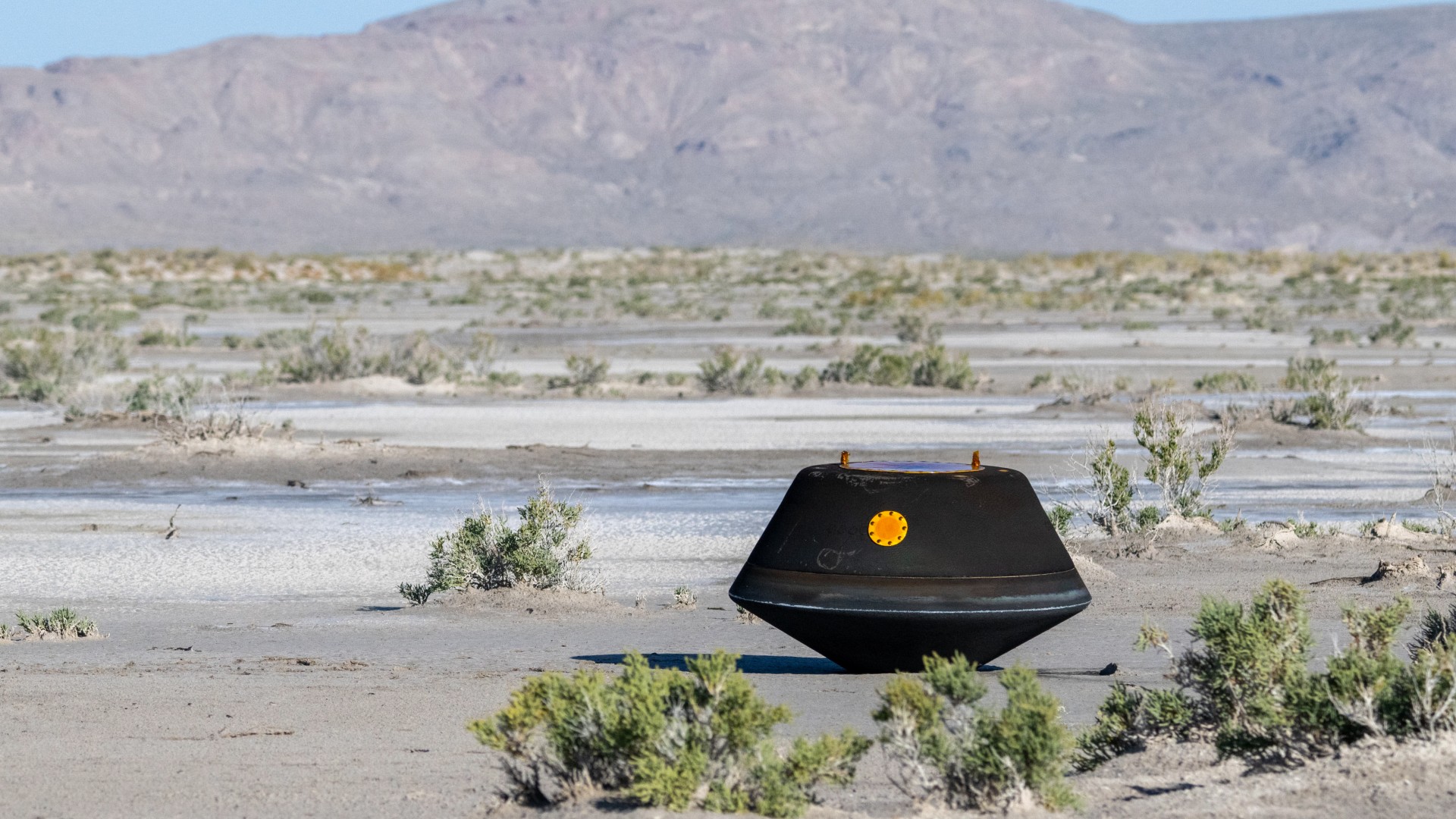
NASA's OSIRIS-Rex asteroid-sampling mission, tasked with finding hints about the origins of life on our planet, has returned to Earth from a seven-year journey to the other side of the solar system.
The billion-dollar spacecraft fired its descent capsule from a height of roughly 63,000 miles (102,000 kilometers) above Earth Sunday (Sept. 24), sending the capsule hurtling through the atmosphere at speeds of up to 27,000 mph (43,000 km/h) before it slowed and deployed parachutes to land in the Utah desert at 10:53 a.m. EDT (15:53 GMT).
Inside the capsule is 2 ounces (60 grams) of rocky space rubble from Bennu, a potentially hazardous near Earth asteroid that has a 1-in-2,700 chance of striking Earth in the year 2182 — the highest odds of any known space object. Yet what's trapped inside the capsule's rocks is of far more interest: the possible extraterrestrial precursors of life on Earth.
Related: NASA's OSIRIS-REx mission almost bit the dust — then Queen guitarist Brian May stepped in
"The ultimate [proverbial] carrot is the search for the source of life," Queen guitarist Brian May, who has a doctorate in astrophysics and was involved with the mission, told Live Science. "This is what fires us all up, I think, and it's a possibility that this project might contribute to that."
Slingshot to a distant asteroid
Blasting off from Cape Canaveral, Florida, in September 2016, the van-sized OSIRIS-REx (short for "Origins, Spectral Interpretation, Resource Identification, Security-Regolith Explorer") spent the next year performing a close flyby of Earth. At its nearest approach above Antarctica, the spacecraft flew roughly 10,700 miles (17,200 km) overhead — a maneuver that enabled it to slingshot itself to Bennu by increasing its speed by 8,451 mph (13,601 km/h).
Because of the so-called Yarkovsky effect (named after the 19th-century engineer who first proposed it) space rocks such as asteroids, over long periods of time, absorb and emit enough momentum-carrying light to change their orbits.
Sign up for the Live Science daily newsletter now
Get the world’s most fascinating discoveries delivered straight to your inbox.
Quantifying the Yarkovsky effect is crucial to predicting which asteroids are potentially hazardous and whether Bennu will slam into Earth or narrowly miss it. To land the spacecraft on Bennu, OSIRIS-REx's scientists made the most precise measurement of the phenomenon yet.
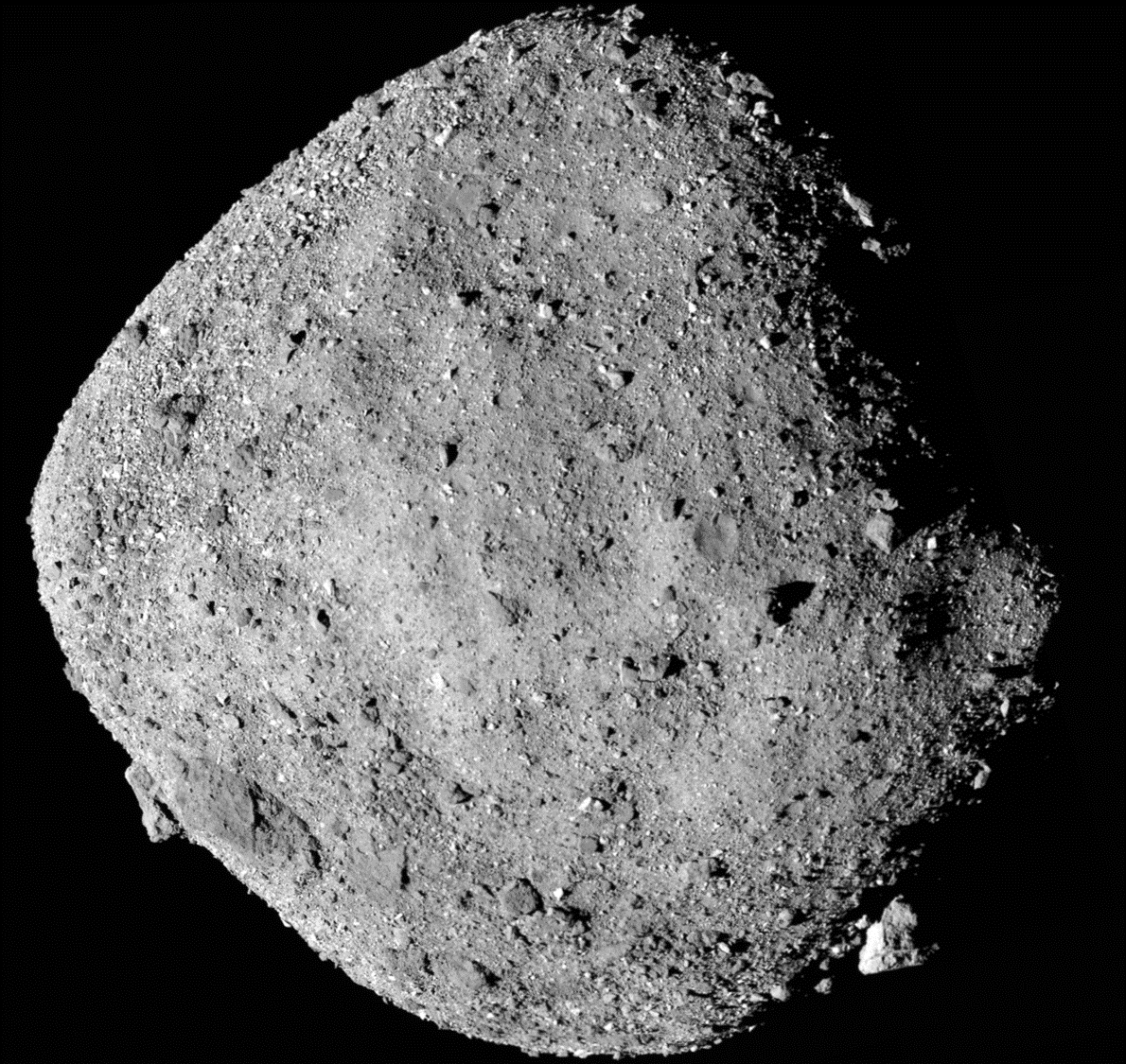
Landing on a god of creation
Viewed from afar, Bennu (named after an Egyptian god of creation) looks like an inert, debris-flecked spinning top suspended in space. Categorized as a rubble-pile asteroid, Bennu is an 85.5 million-ton (77.5 million metric tons) collection of rock chunks and boulders barely held together by weak gravity — a cosmic ball pit that swallows any object that lands too hard on its surface and sends anything that springs too forcefully from it careering into space.
Yet draw closer, as OSIRIS-REx did on its first approach in 2018, and an altogether stranger picture emerges. Veins of carbonate rock 3 feet (0.9 meters) long crisscross a surface spattered with carbon-rich organic material. This is evidence that Bennu's parent body — a 60-mile-wide (96 km) object that formed during the earliest years of the solar system and split roughly 1 billion years ago to form the asteroid — was once home to torrents of hot water and the earliest building blocks of life.
Landing on Bennu's craggy face proved to be a great challenge for the mission scientists, who nudged OSIRIS-REx into a record-breaking orbit (Bennu is the smallest object to be orbited by a spacecraft) around the asteroid for 22 months before they found a safe landing space free of boulders. The researchers settled on a site they named Nightingale, which OSIRIS-REx touched down upon on Oct. 20, 2020.
The safe landing would not have been possible without help from May and his collaborator Claudia Manzoni, who produced countless stereoscopic images of Bennu, enabling the team to see the asteroid in 3D and pick a flat landing site.
May and mission leader Dante Lauretta, a professor of planetary science and cosmochemistry at the University of Arizona, first met at the U.N.'s annual International Asteroid Day. After the OSIRIS-REx scientists released their first images of Bennu online, May emailed Lauretta a stereoscopic image he had made to render the asteroid's surface in 3D.
"As we started to get into the challenge of finding a sample location, I just knew we needed to see the surface in three dimensions," Lauretta told Live Science. "So I put out the call to Brian [May]. I figured, he's a busy guy; he's got a lot of things going on in his life; he was just having fun with our data. But they stepped in and did a fantastic job.
"I sent him coordinate after coordinate," Lauretta added. "We went through over 50 locations on the asteroid surface, and Brian and Claudia processed every one of them. And it played a critical role in sample site selection."
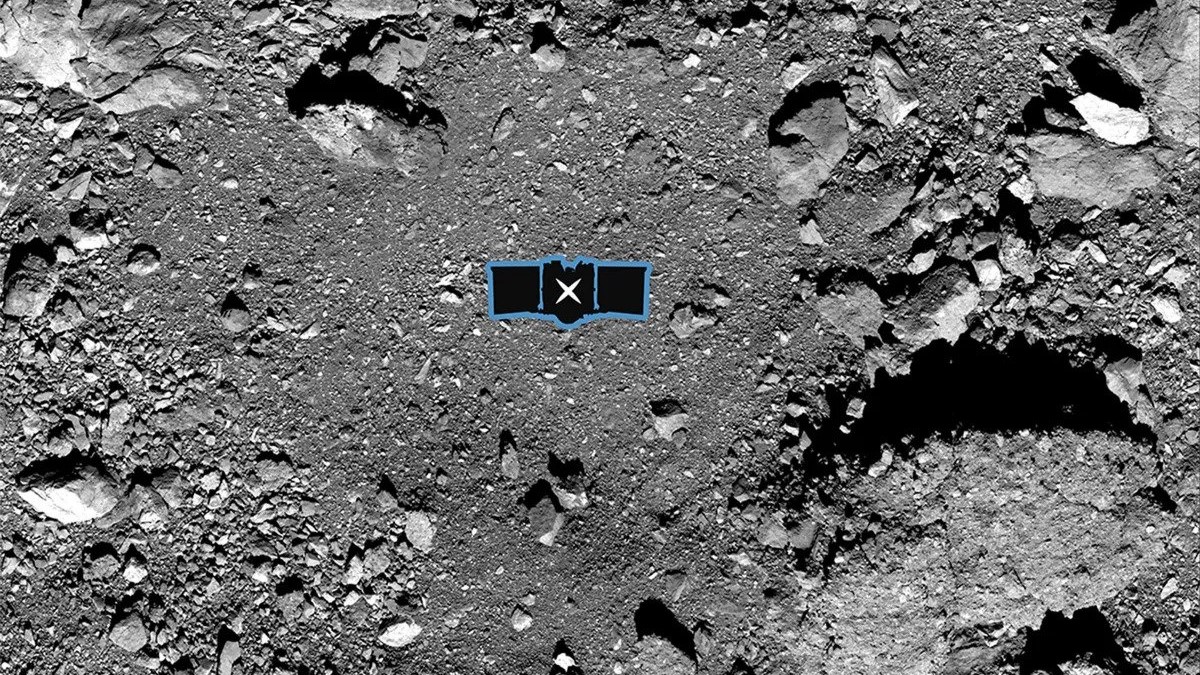
With the landing site fixed, OSIRIS-REx descended to Bennu's surface. Upon contact, it fired a burst of nitrogen from its Touch-and-Go Sample-Acquisition Mechanism — not only to stick the landing but to prevent the craft from sinking through the asteroid. The blast sent rocks and dust careening around the craft, and some of that rocky debris was collected in a canister aboard OSIRIS-REx.
A later burst from OSIRIS-REx's thrusters later lifted it from Bennu, and the ship completed a number of flyovers before leaving the asteroid for Earth in May 2021.
Now that the descent capsule has safely landed in the Utah desert, the samples will be carefully collected to avoid any exposure to outside contamination and then sent to multiple labs for analysis.
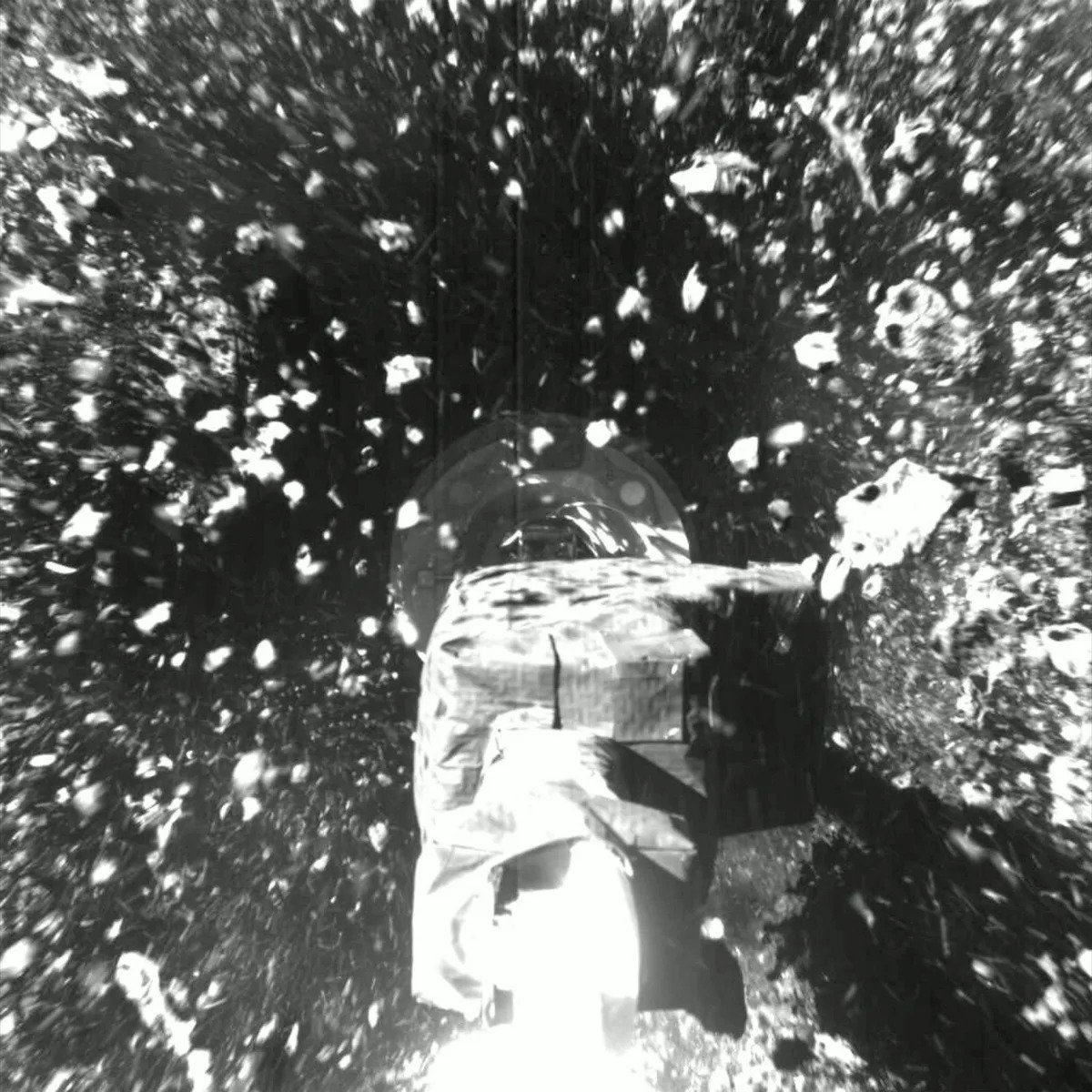
Finding life in space
The next step is to find out what the Bennu samples are made of. Based on images, scientists think the sample contains a mix of dust and rock types; some of which are so fragile that they would never reach our planet as meteors, the mission scientists previously told Live Science.
Past analyses of meteorites found on Earth have revealed that rocks that fell to our planet contained the five nucleobases essential for building life using DNA and RNA: adenine (A), guanine (G), thymine (T), cytosine (C ) and uracil (U). But scientists weren't sure whether these molecules came from space or if they were contaminants from Earth's atmosphere.
Then, earlier this year, scientists with Japan's Hayabusa2 mission to the asteroid Ryugu revealed that the RNA nucleobase uracil is present on that space rock's surface. Ryugu, like Bennu, is a rubble-pile asteroid, so finding uracil or the other bases on Bennu may suggest that these precursors to life are typical features on such asteroids.
How life's building blocks might have formed on Ryugu, or in the interstellar cloud that would later birth it and the rest of our solar system, isn't well understood. However, some scientists think amino acids and nucleotides could have been made when interstellar ice was zapped with intense cosmic rays: breaking down the simple molecules trapped within and reconstituting them into more complex configurations.
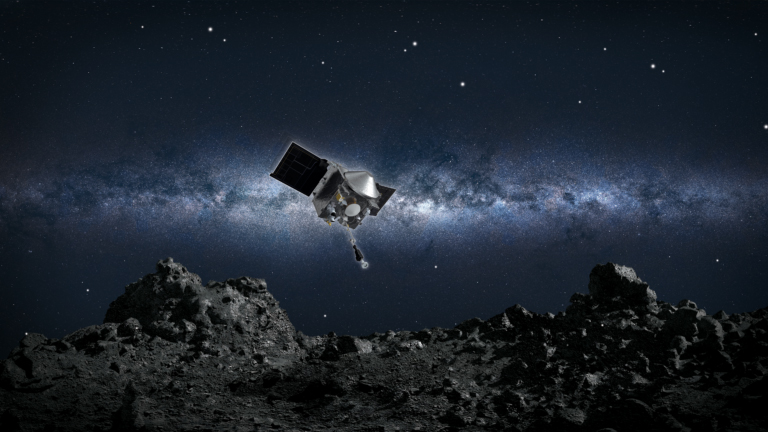
These molecules may have eventually hitched a ride to Earth via meteorite impacts, where they sparked the first stirrings of life in primordial oceans.
Now that it has landed, the descent capsule will be transported to a clean room before the sample capsule is removed and stored inside a hydrogen purge to prevent contamination. On Sept. 25, the capsule will be flown to a curation lab at NASA's Johnson Space Center in Houston.
NASA plans to reveal the samples to the public on Oct. 11 and ship some to labs around the world. If life's precursors lurk within them, we will likely know in the next couple of years.
"If we actually had a string of nucleic acid, which is a fairly complicated molecule, that would be revolutionary, like maybe Nobel Prize-level science," Lauretta said. "So we're looking more for the building blocks — the pieces that might have come together to build RNA and DNA and proteins. We don't expect to find actual biomolecules."
This isn't the end of OSIRIS-REx's flight. After releasing its descent capsule, the asteroid chaser zipped past Earth to its next target, Apophis. This potentially hazardous near-Earth asteroid is also laden with intriguing subsurface materials that OSIRIS-REx is set to grab in 2029.

Ben Turner is a U.K. based staff writer at Live Science. He covers physics and astronomy, among other topics like tech and climate change. He graduated from University College London with a degree in particle physics before training as a journalist. When he's not writing, Ben enjoys reading literature, playing the guitar and embarrassing himself with chess.









